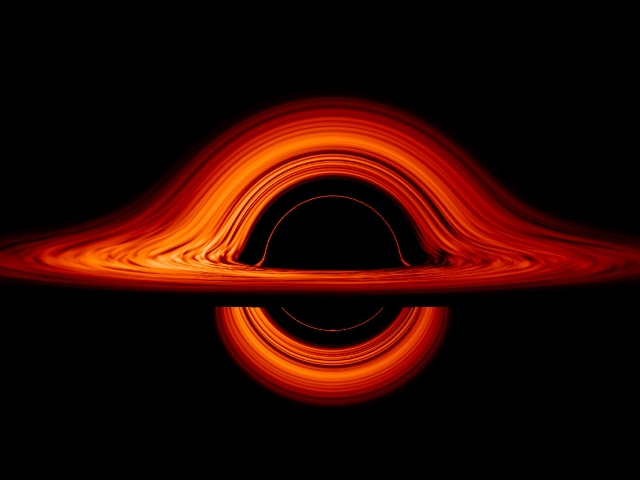
-
Make Yourself Feel Really Puny With NASA’s New Black Hole Video
03 May 2023 by Tayla in Lifestyle, Science, Space, Tech/Sci, Video, World
[imagesource:jeremyschnittman/nasa’sgoddardspaceflightcentre]
No head can actually be wrapped around the mass of a black hole. They are simply too unimaginably supermassive. Even a small black hole is extraordinarily ginormous.
The fact that there are black holes in the universe bigger than our solar system, and bigger than the giant Andromeda galaxy, is mind-bending at least.
After potentially wasting your time in those Checkers lines to get Logan Paul’s stupid PRIME energy drink, feeling guilty about saying sorry before every voice note that you’ve sent, or putting yourself together after feeling like a human car crash post-Burn, some much-needed perspective is needed.
That’s when we head over to NASA. In a recent video released by the agency’s Goddard Space Flight Center Conceptual Image Lab, per Mashable, the gargantuan size and mass of these fascinating cosmic objects are enough to make you feel like a mere speck. Feeling that small is necessary to realise how little famous YouTubers, WhatsApp etiquette, and dusty hangovers mean in the great scheme of things.
Black holes are so massive that not even light can escape, which is how you know you’re basically nothing in comparison:
This “new NASA animation highlights the ‘super’ in supermassive black holes,” NASA writes. “These monsters lurk in the centers of most big galaxies, including our own Milky Way, and contain between 100,000 and tens of billions of times more mass than our Sun.”
In just over 90 seconds, the animation will give you a tour of 10 black holes of increasing size. Enjoy:
One of the first black holes you see is Sagittarius A, the black hole at the centre of our Milky Way galaxy, as massive as some 4,3 million suns. The video ends with TON 618, which carries the weight of over 60 billion solar masses.
Black holes aren’t totally visible, but:
When we see actual (and profoundly rare) images of black holes, or artistic conceptions of black holes, we don’t see the lightless black hole itself, but we can see the immensely hot dust and gas rapidly spinning around the object, called an “accretion disk.” Some of this material inevitably falls into the black hole, never to return; much it gets spewed back out into the cosmos, because black holes aren’t efficient consumers of galactic material.
According to Douglas Gobeille, an astrophysicist and black hole researcher at the University of Rhode Island, black holes are not that good at eating things: “They are notoriously picky eaters,” he said.
Sure black holes have a bad rep for being nasty and power-hungry, but really, there is no need to fear them.
“We tend to anthropomorphize these things,” astrophysicist Misty Bentz told Mashable following the first image ever taken of a black hole. “But really, black holes aren’t evil, mean, or scary. They just… are.”
I am not even trying to wrap my head around all this, I will just accept it as is.
[source:mashable]
Latest News
-
Game, Seth, Match – Goodbye 2024
Hey Guys - thought I’d just give a quick reach-around and say a big thank you to our rea...
-
Breakfast Of Champions: Hollywoodbets Kenilworth Racecourse Breakfast Gallops Is Back!
[imagesource:CapeRacing] For a unique breakfast experience combining the thrill of hors...
-
Need NYE Plans? Cafe Caprice’s Night Of Enchantment Masquerade Party Could Do The Trick
[imagesource:howler] If you're still stumped about what to do to ring in the new year -...
-
Buckingham Palace Steps In After Staff Christmas Party Spirals Out Of Control
[imagesource:maxandeli/facebook] It's not just in corporate that staff parties get a li...
-
Designer Babies Are Running Into Trouble As Teens, Grappling With Being ‘Experiments’
[imagesource:here] Imagine being born with the weight of your parents’ version of per...
-






























